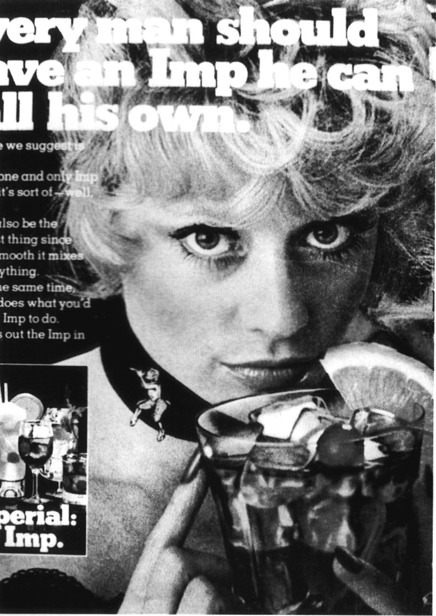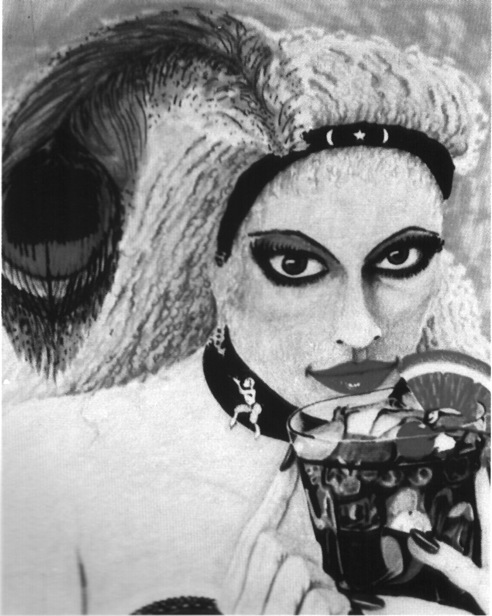Choices and Illusions (11 page)
Read Choices and Illusions Online
Authors: Eldon Taylor

There are only white circles between the black frames.
47
Choices and Illusions Interior.indd 47
6/20/13 3:41 PM


CHOICES AND ILLUSIONS
Read the following:
Figure 13
This is a classic example of context perception. You probably
read, “THE CAT.” But look closely. What is the difference between
the
H
in the word
the
and the
A
in the word
cat?
Remember, we often make up the context and/or decide on an approved context.
The lines below are really equal in length.
Figure 14
The interesting thing about illusions, as with the previous one,
is that even though you know it’s an illusion, you nevertheless see the two lines as being of different lengths—the illusion still influences your judgment.
The following photo was used to promote a seminar enti-
tled
Change Without Thinking
that I taught in Malaysia at the Putra Centre.
48
Choices and Illusions Interior.indd 48
6/20/13 3:41 PM

What We perceive and Fail to perceive
Figure 15
did you notice the missing part of the face? look closely at the
space behind the right lens of my glasses. This photo was among a
selection of photos I’d had taken. Several months later, after many people had seen and approved the picture for PR purposes, someone noticed the defect behind the glasses. The brain is so used to
filling in the blanks that most individuals do not even see a defect such as this until it is pointed out to them.
If this sample of illusions has tricked you, then perhaps tak-
ing a closer look at your own expectations, beliefs, perceptions, or perceptual defenses is in order.
Although optical illusions are widely circulated on the Internet,
most of the illusions used in this chapter were reprinted with per-
mission from Antonio Zamora at
www.scientificpsychic.com
. If you enjoy cognitive illusions and would like to see some more, please visit my website,
www.eldontaylor.com/choicesandillusions
.
49
Choices and Illusions Interior.indd 49
6/20/13 3:41 PM
Choices and Illusions Interior.indd 50
6/20/13 3:41 PM
x
PsYChologiCal
defense MeChanisMs
“Be careful that victories do not carry the seed of future defeats.”
— r A l p h W . s o C k m A n
A number of psychological defense mechanisms are designed
to protect our self-image. Most people are aware of at least some
of them. Those that are known as perceptual defense mechanisms
include the following:
Denial.
As implied by its name, the mechanism of de-
nial is simply one of denying. Often the denial occurs through
projection— that is, projecting blame or fault onto another.
Fantasy formation.
Fantasy formation creates a perceived reality out of fantasy. If motives cannot be satisfied in the objective external world, they may become a perceived reality in a dream world.
Some psychologists suggest that the appeal of much of our enter-
tainment is oriented to satisfying our fantasies for adventure, affection, and security perhaps not so vividly experienced otherwise.
Introjection.
Introjection allows one to place blame on one-self. This self-directed blame or punishment defends against dis-
appointment or disillusionment in another. For example, a child
feels unworthy of the parent’s attention because the parent pays
no attention to the child.
51
Choices and Illusions Interior.indd 51
6/20/13 3:41 PM
CHOICES AND ILLUSIONS
Isolation.
Isolation involves the avoidance of connecting associations to related ideas that produce anxiety. One set of data is isolated from an associated set: birth is isolated from death, war from mourning, nuclear arsenals from murderous horror, and so forth.
Projection.
Projection allows one to project blame or responsibility onto another.
Regression.
Regression is a mechanism common during seri-
ous illness. Essentially, one regresses to an earlier age, usually as a dependent, when one felt safe and comfortable. The individual
returns to an earlier state of development in which someone else
assumed responsibility and where fewer, simpler, and more primi-
tive goals existed.
Repression.
Generally repression censors or prohibits memo-
ries, associations, and adjustments from conscious awareness. like
an invisible filter, this mechanism prevents the conscious mind
from “seeing” painful memories and stymied motives. Personal
experiences ranging from embarrassment to cruelty are often sub-
ject to repression.
Sublimation.
Sublimation redirects basic drive mechanisms.
Sublimation is simply the substitution of acceptable behavior to
satisfy basic motives that might be met equally well in a primitive sense by some form of unacceptable social behavior. Aggression
motives, for instance, are often satisfied by sports activities. The process of sublimation is to find avenues in which basic motives
may be satisfied in a manner acceptable to the individuals and to
society.
In addition to these eight mechanisms, several miscellaneous
escapes and defenses are considered by some theorists as con-
tributing to our basic perceptual defenses, which show us only
what we want to see about ourselves and the world around us.
Several mechanisms can function at one time; in that case, the
boundaries overlap, making it difficult to differentiate between
the mechanisms.
52
Choices and Illusions Interior.indd 52
6/20/13 3:41 PM
psychological Defense Mechanisms
Basic perceptual defenses show each of us
only what we want to see about
ourselves and about the world around us.
Repeated experiments have adequately demonstrated that the
conscious mind is not a necessary part of information processing.
In fact, the unconscious can, and quite frequently does, operate
without the conscious, or is at least unknown to it. Freud once put it this way, “The most complicated achievements of thought are
possible without the assistance of consciousness.”
Manipulating Your Mind
We’re ready now to take a look at an example. let me first
introduce what you are about to see and warn you that some of
the images are for adults, not for children. Several years ago an
anonymous individual sent me an advertising training manual
after reading my book
Subliminal Learning.
The manual described in sophisticated terms the reason for embedding sexual taboos in
advertising and provided the graphic example that I will show you.
The bottom line to all the psychobabble is this: the sexual embeds
are not consciously recognized due to perceptual mechanisms,
but the result tends to augment product recognition because of
increased dwell time (the time taken to view the ad or even to take a second glance before one turns the page). Judge for yourself.
What follows first is the finished advertisement. next you will
see the artist’s rendition made before setting a real model and
props in place for a photo session designed to replicate the artist’s portrayal. After that you will see the same image, but this time
with the embeds outlined so they cannot be missed. Finally, you
will see the outlined embeds alone. I have intentionally used four
separate pages in this book to prevent visual clues giving away the embeds early. Please take a moment to study the first two pages
before viewing the embeds closer. (To see these illustrations in full color, go to
www.eldontaylor.com/choicesandillusions
.)
53
Choices and Illusions Interior.indd 53
6/20/13 3:41 PM
Choices and Illusions Interior.indd 54
6/20/13 3:41 PM

psychological Defense Mechanisms
The advertisement:
Figure 16
55
Choices and Illusions Interior.indd 55
6/20/13 3:41 PM
Choices and Illusions Interior.indd 56
6/20/13 3:41 PM

psychological Defense Mechanisms
The artist’s original conceptualization:
Figure 17
57
Choices and Illusions Interior.indd 57
6/20/13 3:41 PM
Choices and Illusions Interior.indd 58
6/20/13 3:41 PM
